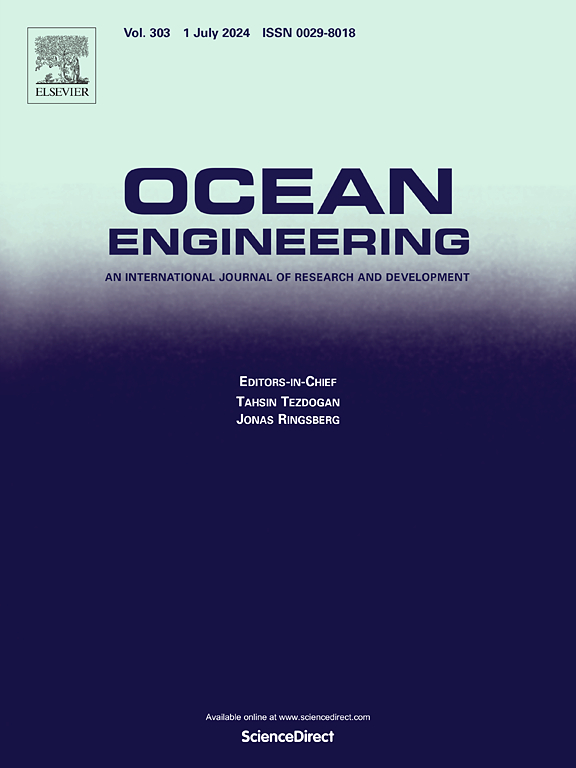波浪作用下浮桥的简化分析方法
IF 5.5
2区 工程技术
Q1 ENGINEERING, CIVIL
引用次数: 0
摘要
本文提出了一种可用于浮桥概念设计阶段的简化分析方法。该方法采用基于商业结构分析软件的耦合动力分析,无需对运动方程中的连续延迟水动力阻尼项进行卷积积分。相反,该方法使用等效常数来解释阻尼和附加的水下惯性效应。目标模型是一座直浮桥,长度为4.6公里,考虑用于挪威西海岸的Bjørnafjord。本文提出了一种合理的浮桥静水动力构件的建模方法,以及基于预估波浪荷载传递函数的波浪荷载的应用。通过将某浮桥在波浪作用下的受力特性分析结果与OrcaFlex分析结果进行对比,验证了该方法的有效性。研究了浮桥在各种波浪条件下的行为,表明桥梁梁的整体响应误差在可接受的水平。本文章由计算机程序翻译,如有差异,请以英文原文为准。
Simplified analysis method for pontoon-supported floating bridges under waves
In this study, a simplified analysis method was proposed that can be used in the conceptual design phase of floating bridges. The proposed method involves a coupled dynamic analysis based on commercial structural analysis software without the implementation of a convolutional integral for the continuously retarded hydrodynamic damping term within the equation of motion. Instead, the method uses equivalent constants to account for damping and additional underwater inertial effects. The target model was a straight pontoon-supported floating bridge with a length of 4.6 km, considered for the Bjørnafjord on the west coast of Norway. This paper presents a reasonable modeling approach for the hydrostatic and hydrodynamic components of a floating bridge and the application of wave loads based on pre-evaluated wave load transfer functions. The effectiveness of the proposed method was validated by comparing the analysis results for the behavior of a floating bridge under wave conditions with the results of OrcaFlex. The behavior of the floating bridge was investigated under various wave conditions, demonstrating an acceptable level of error in the overall response of the bridge girder.
求助全文
通过发布文献求助,成功后即可免费获取论文全文。
去求助
来源期刊

Ocean Engineering
工程技术-工程:大洋
CiteScore
7.30
自引率
34.00%
发文量
2379
审稿时长
8.1 months
期刊介绍:
Ocean Engineering provides a medium for the publication of original research and development work in the field of ocean engineering. Ocean Engineering seeks papers in the following topics.
 求助内容:
求助内容: 应助结果提醒方式:
应助结果提醒方式:


